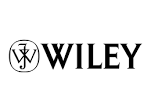Wiley's Global Research business is a provider of content-enabled solutions to improve outcomes in research, education and professional practice with online tools, journals, books, databases, reference works and laboratory protocols. With strengths in every major academic, scientific and professional field, and strong brands including Wiley Blackwell and Wiley VCH, Wiley proudly partners with over 800 prestigious societies representing two million members. Through Wiley Online Library, we provide online access to a broad range of content: over 4 million articles from 1,500 journals, 9,000+ books, and many reference works and databases. Access to abstracts and searching is free, full content is accessible through licensing agreements, and large portions of the content are provided free or at nominal cost to nations in the developing world through partnerships with organizations such as HINARI, AGORA, and OARE.
Wiley's Professional Development business creates products and services that help customers become more effective in the workplace and achieve career success. It brings to life the ideas and best practices of thought leaders in business, finance, accounting, workplace learning, management, leadership, technology, behavioral health, engineering/architecture, and education to serve these communities worldwide.
Wiley Global Education serves undergraduate, graduate, and advanced placement students, lifelong learners, and, in Australia, secondary school students. We publish educational materials in all media, notably through WileyPLUS, our integrated online suite of teaching and learning resources. Our programs target the sciences, engineering, computer science, mathematics, business and accounting, statistics, geography, hospitality and the culinary arts, education, psychology, and modern languages.
Members:
Resources
Displaying 11 - 15 of 164Sediment in Alluvial and Lacustrine Debris Fans as an Indicator for Land Degradation Around Lake Ashenge (Ethiopia)
Sediments deposited by (paleo) flash floods can hold valuable information on processes of environmental change, land degradation or desertification. In order to assess the suitability of flash flood deposits as proxies for land degradation, we monitored a representative gully segment in North Ethiopia (Ashenge catchment), investigated a sequence of alluvial debris fans downstream of this segment and dated a neighbouring subaquatic debris fan using short‐lived ²¹⁰Pb isotope counting.
Quandaries of a decade‐long restoration experiment trying to reduce invasive species: beat them, join them, give up, or start over?
We evaluate the outcomes and consequences of a decade‐long restoration project in a Hawaiian lowland wet forest as they relate to long‐term management actions. Our initial study was designed both to promote native biodiversity and to develop knowledge that would enable land management agencies to restore invaded forests. Our premise of success followed the prevalent perception that short‐term management, such as removal of invasive species, ideally translates into long‐term and sustainable restoration.
Rapidly restoring biological soil crusts and ecosystem functions in a severely disturbed desert ecosystem
Restoring biological soil crusts (biocrusts) in degraded drylands can contribute to recovery of ecosystem functions that have global implications, including erosion resistance and nutrient cycling. To examine techniques for restoring biocrusts, we conducted a replicated, factorial experiment on recently abandoned road surfaces by applying biocrust inoculation (salvaged and stored dry for two years), salvaged topsoil, an abiotic soil amendment (wood shavings), and planting of a dominant perennial shrub (Ambrosia dumosa).
Water Resources and Soil Management In Italy
Italy has always had a long dramatic history of extreme events such as landslides, flooding, land degradation and drought. Much has been done in terms of prevention and monitoring but still there is much left to do, in particular introducing innovative alert systems based on the integration of realâtime weather forecasting with national alert and protection systems.
Ecosystem structure, function, and composition in rangelands are negatively affected by livestock grazing
Reports of positive or neutral effects of grazing on plant species richness have prompted calls for livestock grazing to be used as a tool for managing land for conservation. Grazing effects, however, are likely to vary among different response variables, types, and intensity of grazing, and across abiotic conditions. We aimed to examine how grazing affects ecosystem structure, function, and composition. We compiled a database of 7615 records reporting an effect of grazing by sheep and cattle on 278 biotic and abiotic response variables for published studies across Australia.


